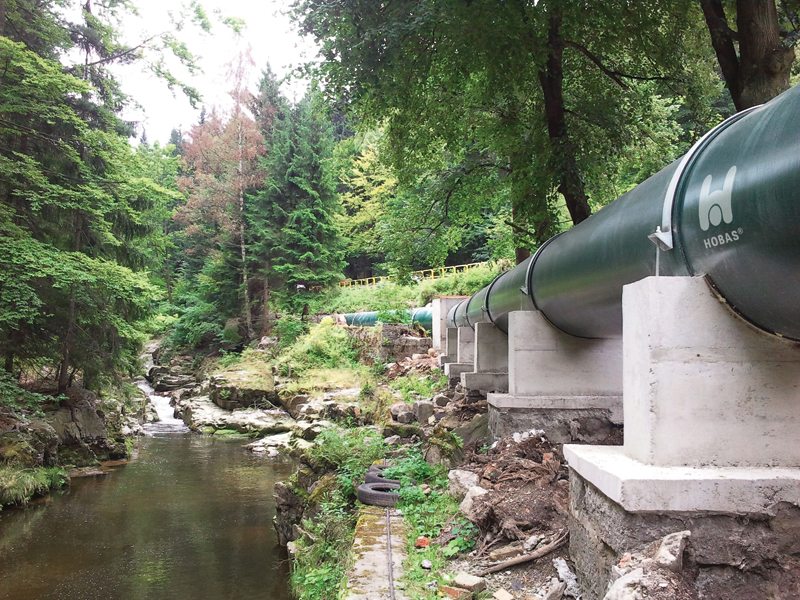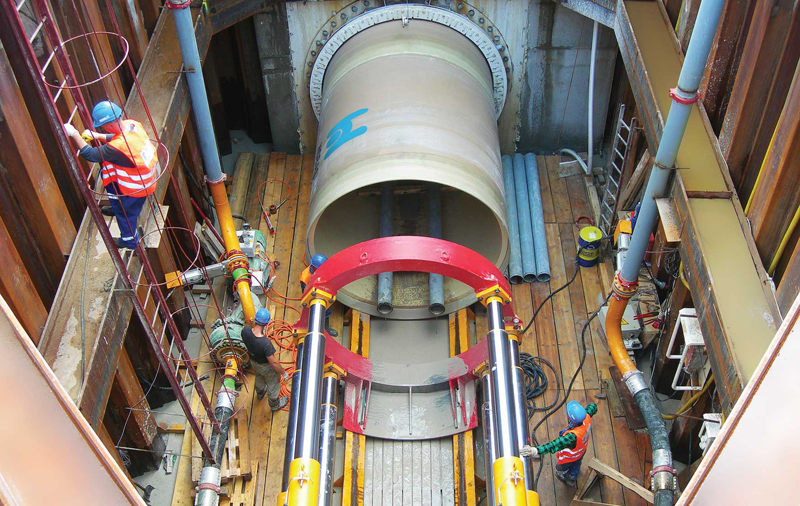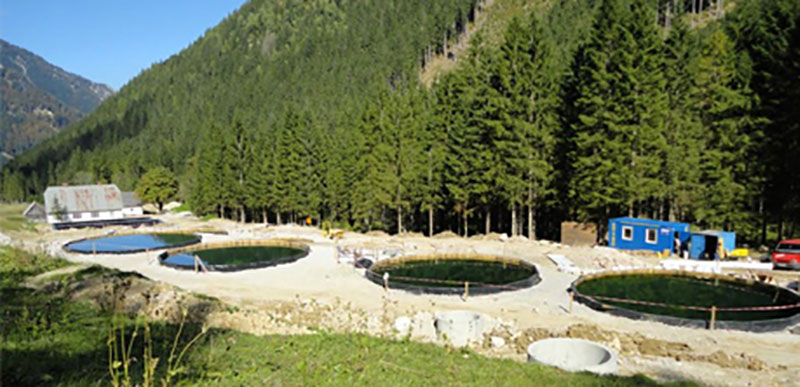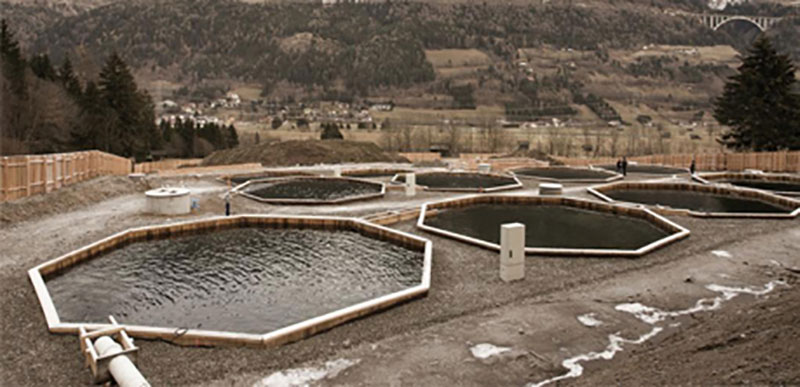
HOBAS Hydropower Pipelines
For six decades have HOBAS Hydropower Products been contributing to the production of green energy: Even the very first HOBAS Project was a hydropower penstock; it was installed in Switzerland in 1961 and is still as good as new. Nowadays, HOBAS supplies for hydropower projects in South Africa, Sri Lanka, Norway, Australia – basically all around the world – and continually develops new products for power plants to make energy production even more efficient.
HOBAS Jacking Pipes
HOBAS Jacking Pipes are not only produced according to stringent environmental regulations, they also prove to be the most environmentally friendly solution for various applications. No matter if laid beneath densely populated cities or protected natural habitats: The trenchless installation of HOBAS Pipes hardly disturbs flora and fauna. Since HOBAS Jacking Pipes feature a service life up to 100 years, complex renovation works and damages on the pipeline are no longer an issue.


Fish farm and constructed wetlands
In Austria’s Gesäuse Nature Park, Xeis Oberlaussa started an aquaculture facility for farming char, which is related to salmon. During building, the company attached great importance to both ecological and technological aspects. Fortunately, the products in the POLO-ECO plus Premium range are suitable for potable water and met the high demands for supplying the eight fir wood fish ponds in a nature reserve. In addition, wetlands for wastewater treatment were also created in the national park. Here too the operators opted to use pipe systems from POLOPLAST.
POLO-ECO plus PREMIUM
The Arctic char, a delicious and extremely nutritious edible fish, is now being farmed in Obervellach in the Möll Valley. At a site covering 10,000 sq m, the operators built an aquaculture facility based on a system developed by Peter Brauchl.
Alpenlachs Aquakultur Group, the licensor, pays particular attention to local environmental requirements. Top priority for the planners and developers was therefore protecting the sensitive ecosystem in the Alps, maintaining the ecological function of the freely flowing water, ensuring the ponds blend in with the natural scenery and selecting eco-friendly construction materials. What they built were eleven octagonal-shaped ponds enclosed with fir wood and lined with clay at the bottom. The water needed for the system is piped in from a nearby stream, Wunzenbach. Fresh water flows into the fir tanks tangentially at a rate of 200 litres per second to keep the 70,000 Arctic char they contain moving. The fresh water is supplied and distributed using the POLO-ECO plus Premium polypropylene pipe system from POLOPLAST. As the Austrian Research Institute (OFI) certified that they are suitable for use with potable water and demands on quality were high, the farm operators decided to use POLO-ECO plus Premium multi-layer polypropylene pipes. Not only is the fresh water supplied but also the effluent containing waste products discharged using POLO-ECO plus PREMIUM pipes. Several times a day these products are flushed with a small amount of water through an outlet in the funnel-shaped clay bottom of the ponds at a slight gradient to a downstream constructed wetland for wastewater treatment. Once the water is treated there in a biofilter with aquatic plants to capture and degrade pollutants, it can then be discharged to an outfall. The biofilter itself consisting of a constructed wetland provides ideal habitats for stone crayfish, fire salamanders and black storks. To distribute the wastewater over the entire biofilter area, POLO-ECO plus PREMIUM pipes tested by POLOPLAST for UV resistance were laid as a header on the surface.


